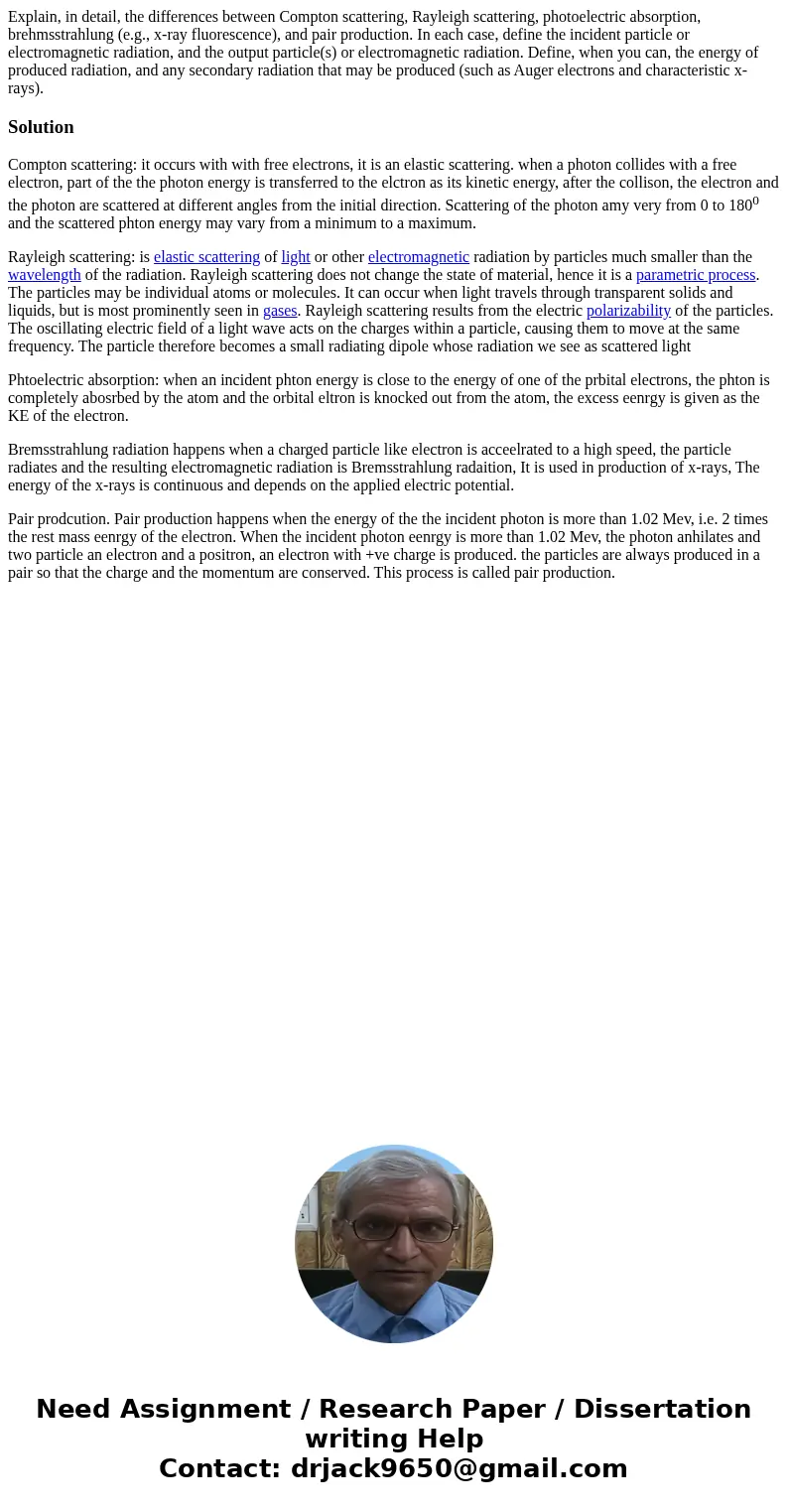Explain in detail the differences between Compton scattering
Solution
Compton scattering: it occurs with with free electrons, it is an elastic scattering. when a photon collides with a free electron, part of the the photon energy is transferred to the elctron as its kinetic energy, after the collison, the electron and the photon are scattered at different angles from the initial direction. Scattering of the photon amy very from 0 to 1800 and the scattered phton energy may vary from a minimum to a maximum.
Rayleigh scattering: is elastic scattering of light or other electromagnetic radiation by particles much smaller than the wavelength of the radiation. Rayleigh scattering does not change the state of material, hence it is a parametric process. The particles may be individual atoms or molecules. It can occur when light travels through transparent solids and liquids, but is most prominently seen in gases. Rayleigh scattering results from the electric polarizability of the particles. The oscillating electric field of a light wave acts on the charges within a particle, causing them to move at the same frequency. The particle therefore becomes a small radiating dipole whose radiation we see as scattered light
Phtoelectric absorption: when an incident phton energy is close to the energy of one of the prbital electrons, the phton is completely abosrbed by the atom and the orbital eltron is knocked out from the atom, the excess eenrgy is given as the KE of the electron.
Bremsstrahlung radiation happens when a charged particle like electron is acceelrated to a high speed, the particle radiates and the resulting electromagnetic radiation is Bremsstrahlung radaition, It is used in production of x-rays, The energy of the x-rays is continuous and depends on the applied electric potential.
Pair prodcution. Pair production happens when the energy of the the incident photon is more than 1.02 Mev, i.e. 2 times the rest mass eenrgy of the electron. When the incident photon eenrgy is more than 1.02 Mev, the photon anhilates and two particle an electron and a positron, an electron with +ve charge is produced. the particles are always produced in a pair so that the charge and the momentum are conserved. This process is called pair production.

 Homework Sourse
Homework Sourse